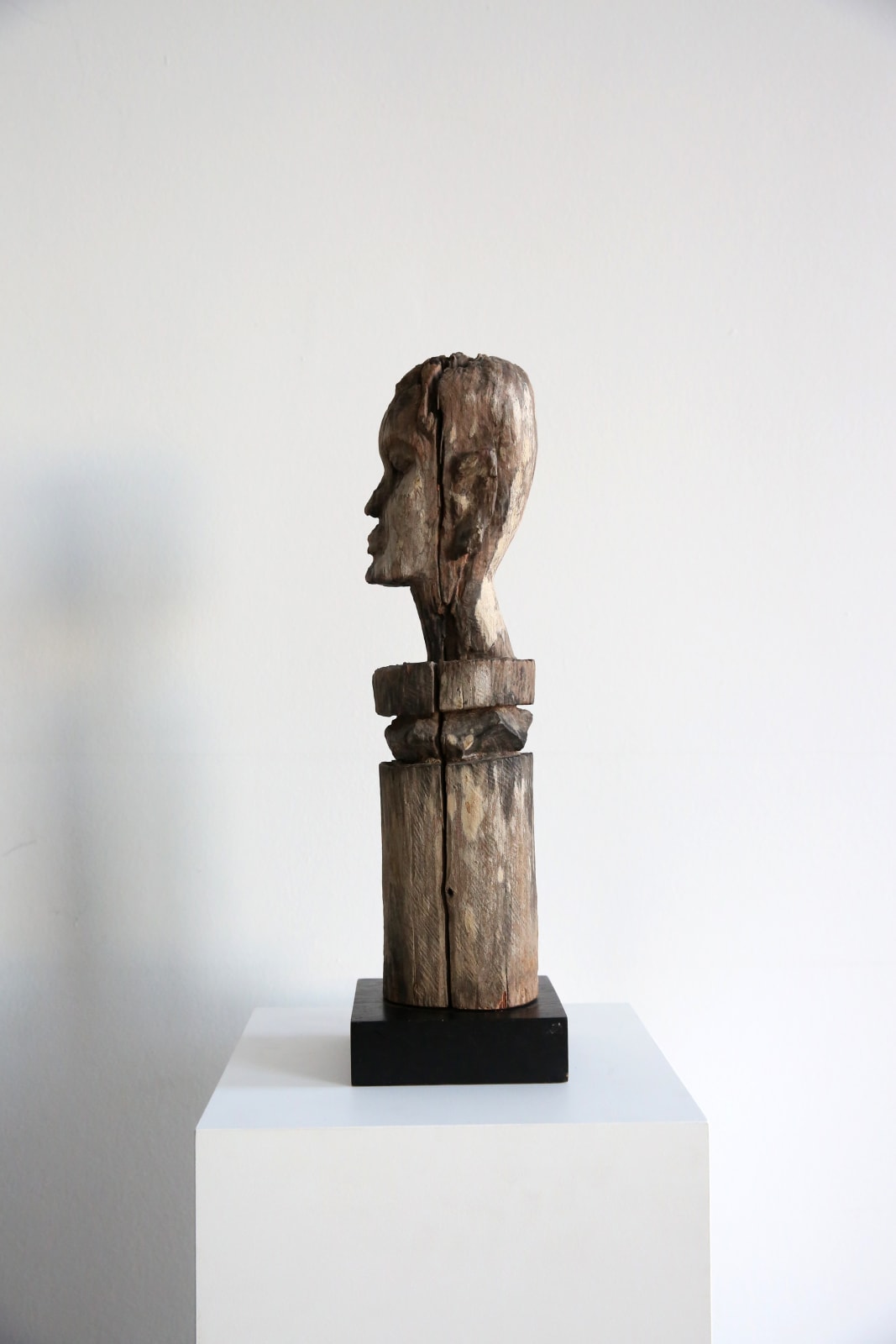Anonymous Zaramo artist
2nd quarter 20th century
Wood
height 17 3/8 in
Further images
Compared to Western and Central Africa, figurative sculpture is rare to find in Eastern Africa. Before independence, Tanzania’s Zaramo people had a long tradition of sculpting full-standing figures crowning grave markers. Living in the eastern coastal region of Tanzania, the Zaramo erected such commemorative grave-posts to honor important ancestors. The figures were intended as a remembrance of the deceased for the living. These posts served as useful reminders of the ancestors who were also memorialized and honored in family genealogies, rituals, traditions, and histories long after they had died.
The realistically sculpted head crowning this old grave marker likely represents an elder as it portrays a bearded man. His face was carved in a realistic style, representing the individual who was to be commemorated. The plump lips, prominent cheekbones, bulbous eyes, puffy eyelids, domed forehead, and the oversized skull give this piece a timeless character, placing this funerary effigy in the world of the ancestors from where he protects his descendants.
About a dozen Zaramo posts crowned by a full-length figure are known, even less only featuring a sculpted head. The naturalistic treatment of the face and the graceful modelling of the different features relates this grave marker to an example formerly in the private collection of the Parisian contemporary art dealers Liliane and Michel Durand-Dessert. Especially the rendering of the cheekbones and the treatment of the eyelids and eyes suggest both works were created by the same master sculptor. Imbued with feelings of pride and self-awareness these sculptures somehow remind of ancient Egyptian dynastic wooden figures. The best-known figure in this style is in the collection of Geneva’s Barbier-Mueller collection (#1027-59), published and published by Tom Phillips in “Africa. The Art of a Continent” (p. 152, #2.36), and exhibited at London’s Royal Academy in 1995. A seated male figure holding its beard, in this similar style, was sold by the Parisian auction house Calmels Cohen in 2004 (10 June 2004, lot 72). In 2006 the same auction house sold a funerary post crowned with a ‘mwana hiti’ figure formerly in the collection of the Barbier-Mueller collection (4 December 2006, lot 98). Berlin’s Ethnological Museum holds three similar grave markers collected in the first decades of the twentieth century (inventory numbers III.E.20113 & III.E.3593 a-c). Post-independence, the ujamaa ideology of President Nyerere resulted in an extensive villagization of Zaramo communities; a resettling which caused many to abandon their traditional grave sites, the markers left to decay. Islamization and urbanization gave a final blow to this ancient tradition of which these beautiful bust remains one of the few remaining witnesses.
Provenance
Acquired in Tanzania by Alain Dufour, circa 1990
Galerie 66, Village Suisse, Paris
Private Collection, Paris
let's keep in touch
Join our community & never miss out on a DUENDE moment from now on
* denotes required fields
We will process the personal data you have supplied to communicate with you in accordance with our Privacy Policy. You can unsubscribe or change your preferences at any time by clicking the link in our emails.













